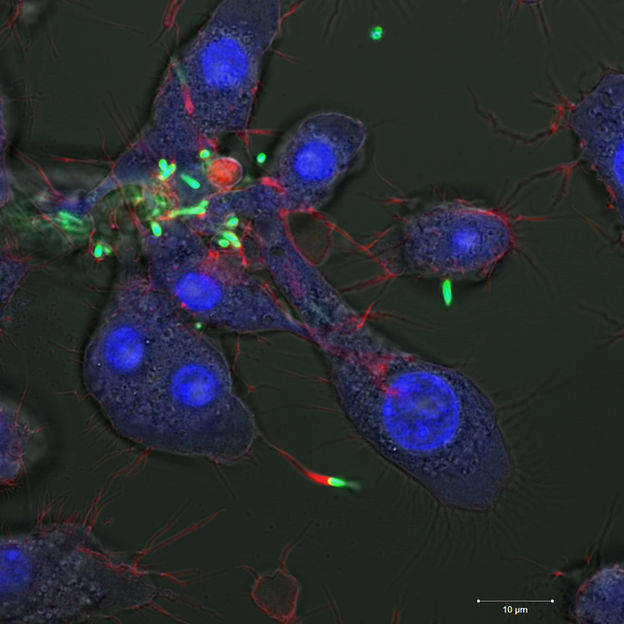New test can precisely pinpoint food pathogens
With Salmonella-tainted ground turkey sickening more than 100 people and Listeria-contaminated cantaloupes killing 15 this year, the ability to detect outbreaks of food-borne illness and determine their sources has become a top public health priority.
A new approach, reported in the journal Applied and Environmental Microbiology by a collaborative team led by Cornell scientists, will enable government agencies and food companies to pinpoint the exact nature and origin of food-borne bacteria with unprecedented accuracy, says food science professor Martin Wiedmann.
The standard method of tracing food-borne illness involves breaking up the DNA of bacteria samples into smaller pieces and analyzing their banding patterns.
But scientists often find that different strains of bacteria have common DNA fingerprints that are too genetically similar to be able to differentiate between them, making it difficult to establish whether the Salmonella that made one person sick was the same Salmonella that infected another person. This was the case in a Salmonella outbreak linked to salami made with contaminated black and red pepper that included 272 cases in 44 states between July 2009 and April 2010.
To surmount this challenge, Wiedmann adopted a genomic approach. By sequencing the genome of 47 samples of the bacteria - 20 that had been collected from human sources during the outbreak, and 27 control samples collected from human, food, animal and environmental sources before the outbreak - he and his team were able to rapidly discriminate between outbreak-related cases and non-outbreak related cases, isolating four samples believed to be connected to the pepper contamination.
In the process of doing so, he also found other links. A Salmonella strain that led to a nationwide recall of pistachio nuts in 2009 turned up in samples from four people - only one of whom had reported eating pistachios. Other connected cases suggested smaller outbreaks of which officials had been previously unaware.
"The use of genome sequencing methods to investigate outbreaks of food-borne bacterial diseases is relatively new, and holds great promise as it can help to identify the temporal, geographical and evolutionary origin of an outbreak," Wiedmann said. "In particular, full genome sequence data may help to identify small outbreaks that may not be easily detected with lower resolution subtyping approaches."
Wiedmann, research associate Henk den Bakker and other lab members developed the single nucleotide polymorphism (SNP) test that is specific to the 2009 pepper-associated outbreak with the help of researchers at Life Technologies Corp. They also collaborated with researchers at Washington State University and departments of health in New York City and New York state.
A similar approach has previously been used in hospital settings to trace pathogenic bacteria such as methicillin-resistant Staphylococcus aureus, but this is its first application for food-borne illness.
Wiedmann said he is continuing to perfect the method and use it to test other types of bacteria. The U.S. Food and Drug Administration and other agencies are also starting to use similar approaches.
Organizations
Other news from the department science

Get the life science industry in your inbox
By submitting this form you agree that LUMITOS AG will send you the newsletter(s) selected above by email. Your data will not be passed on to third parties. Your data will be stored and processed in accordance with our data protection regulations. LUMITOS may contact you by email for the purpose of advertising or market and opinion surveys. You can revoke your consent at any time without giving reasons to LUMITOS AG, Ernst-Augustin-Str. 2, 12489 Berlin, Germany or by e-mail at revoke@lumitos.com with effect for the future. In addition, each email contains a link to unsubscribe from the corresponding newsletter.
More news from our other portals
Last viewed contents
Hering's_law_of_equal_innervation
Category:Embryologists
1982_Chicago_Tylenol_murders

A molecular switch for the X chromosome - Elucidation of basic mechanism to initiate the inactivation of X chromosomes in female organisms
Charcot-Bouchard_aneurysm
Choanoflagellate





















































